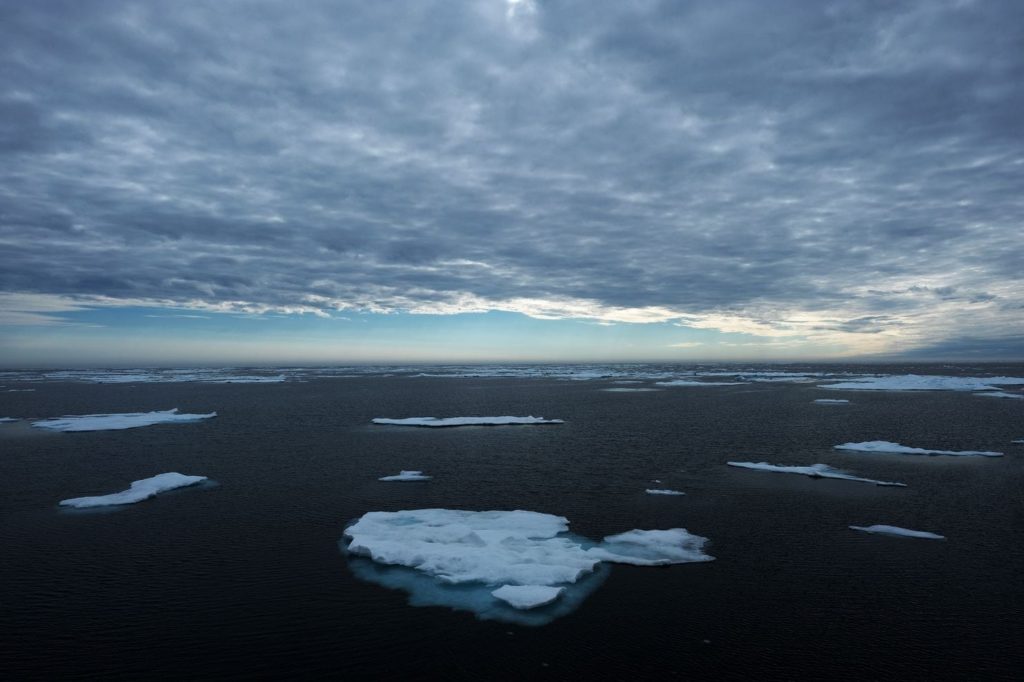By Maddie Stone.
Scientists have identified a surprising new mechanism that could be affecting cloud formation and weather patterns in the Arctic: bacteria from the ocean floor.
When tiny, plantlike ocean microbes known as phytoplankton die, their bodies sink to the bottom of the sea, becoming food for bacteria residing there. New observations made in the Bering and Chukchi seas off the coast of Alaska suggest that under the right conditions, these algae eaters are sloshed to the surface and from there are wafted into the air.
Once airborne, seafloor bacteria may become seeds that promote the growth of ice crystals, an important step in the formation of Arctic clouds.
“Clouds are super important in the Arctic,” said Jessie Creamean, an atmospheric scientist at Colorado State University and lead author of new research published in mid-July in Geophysical Research Letters.
“They regulate the surface and atmospheric temperatures, affecting sea ice, ecology, shipping, Arctic climate and weather. And we just have a really poor understanding of how they form,” Creamean said.
Prior research from the Southern Ocean as well as laboratory experiments suggest that ocean microbes can enhance cloud formation.
READ MORE at washingtonpost.com

